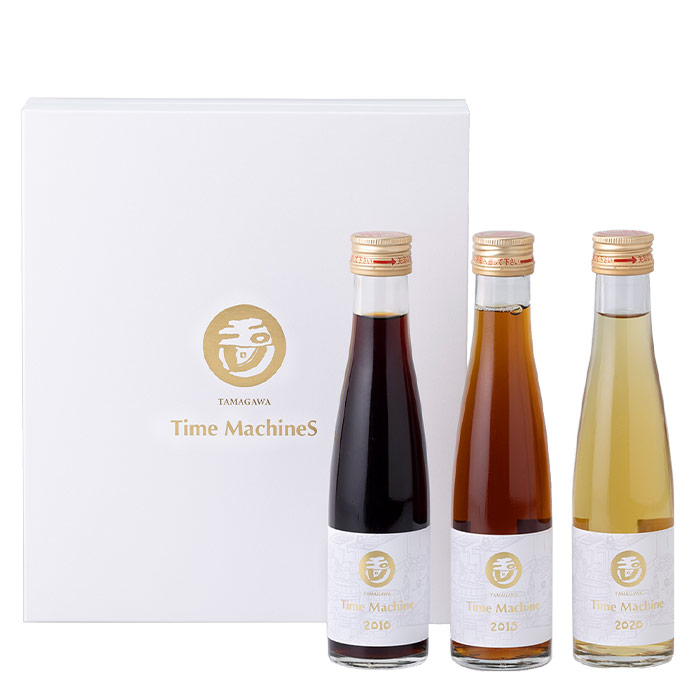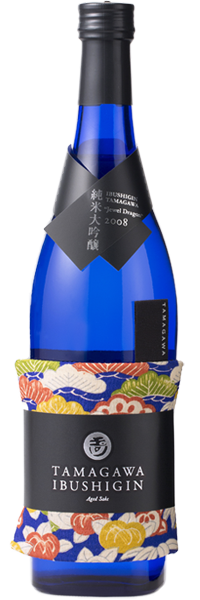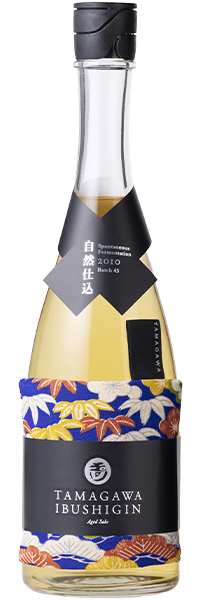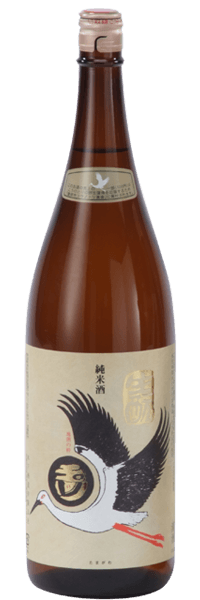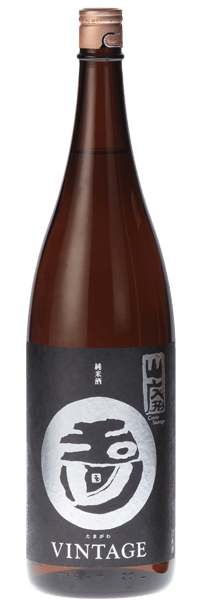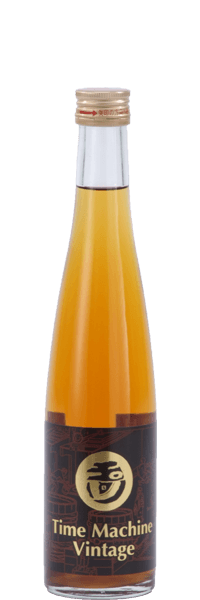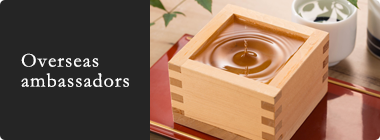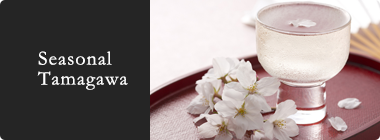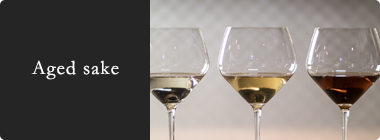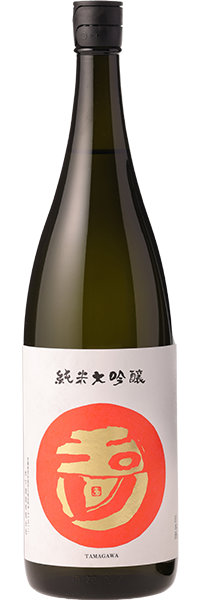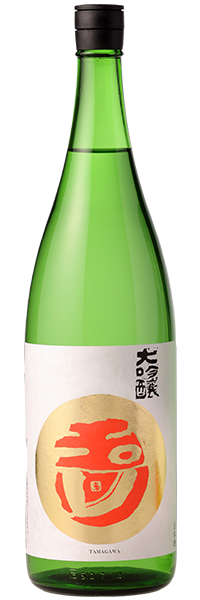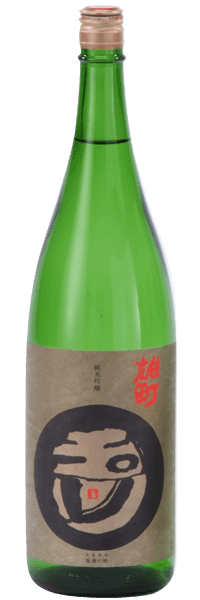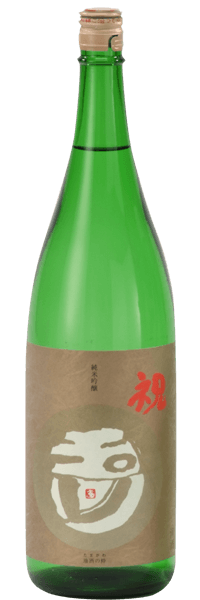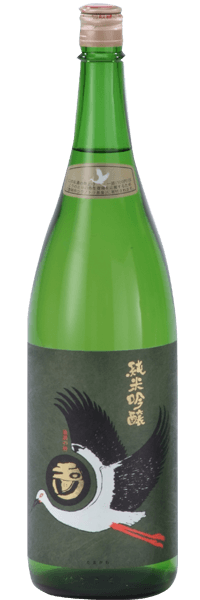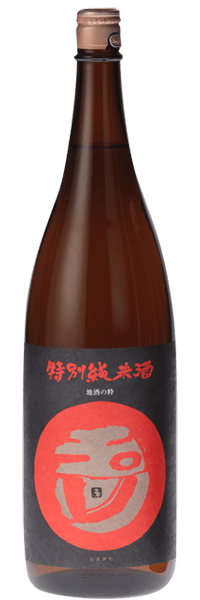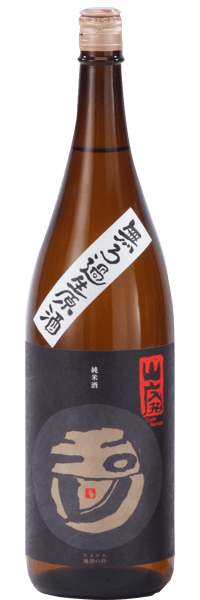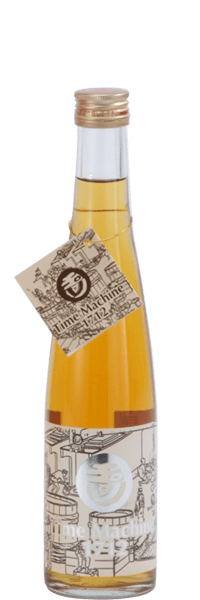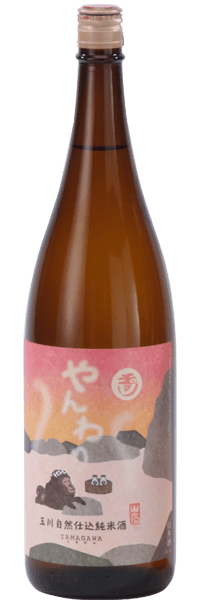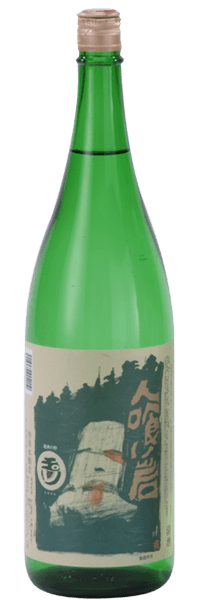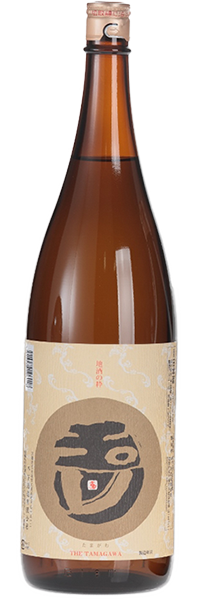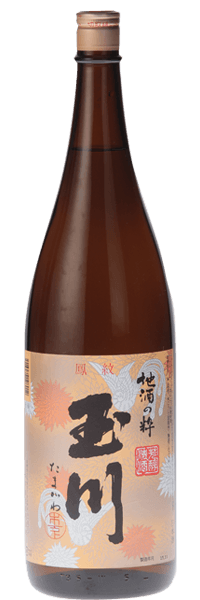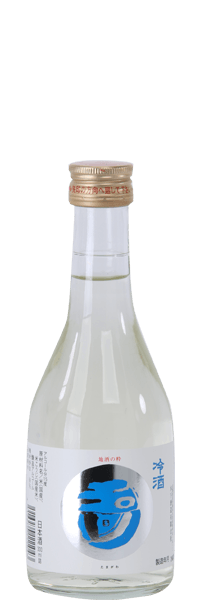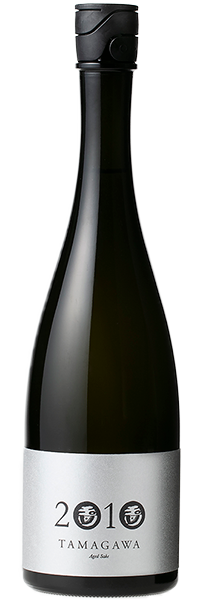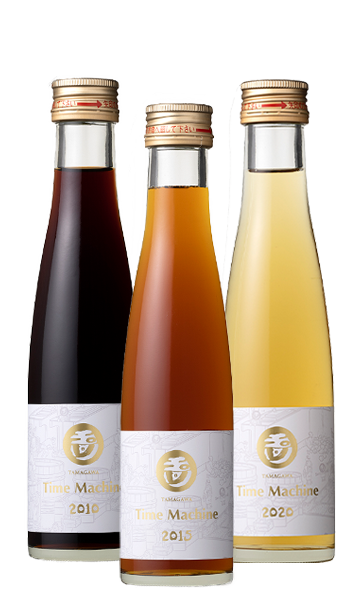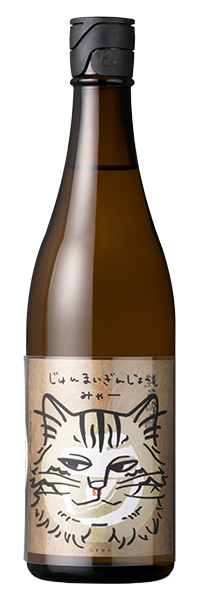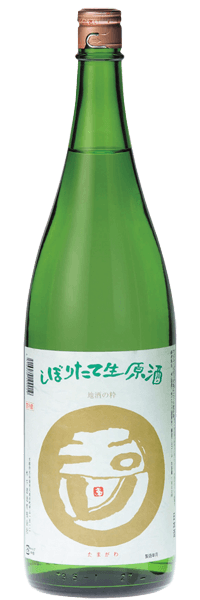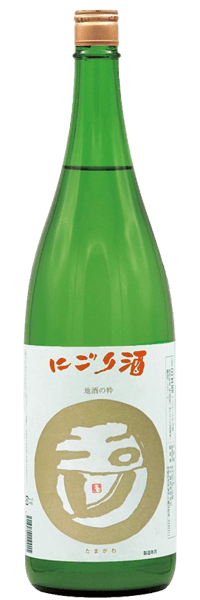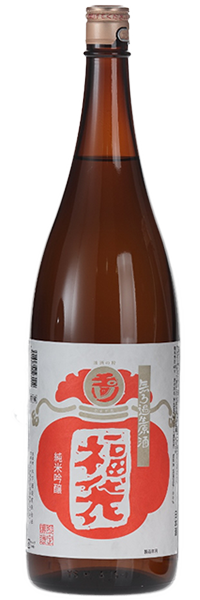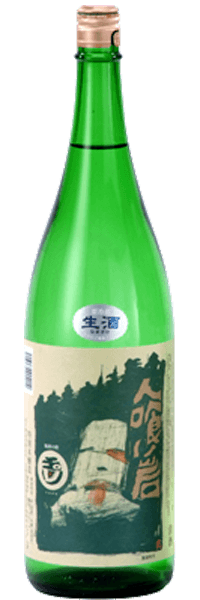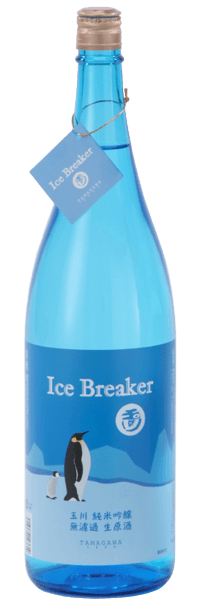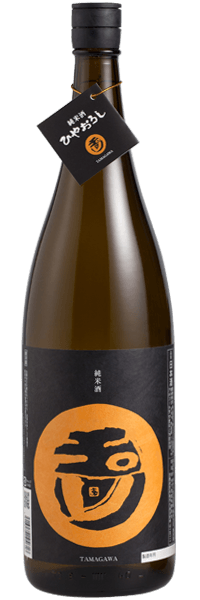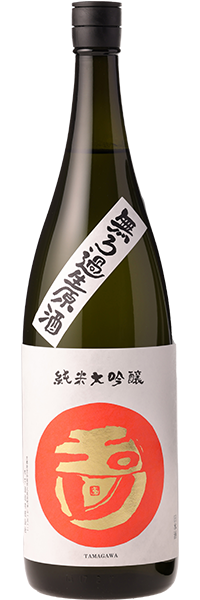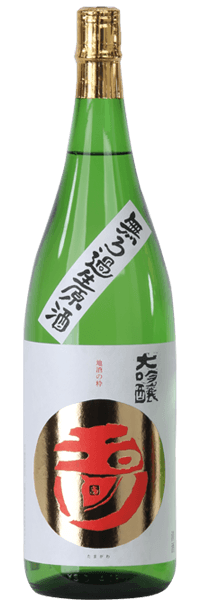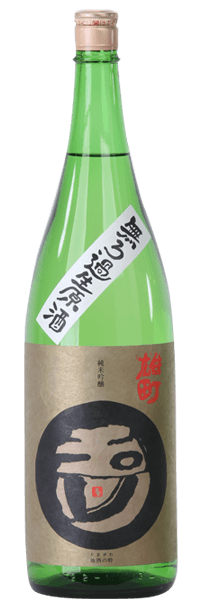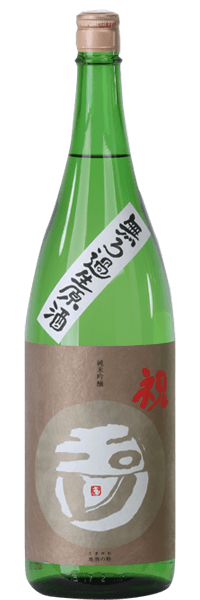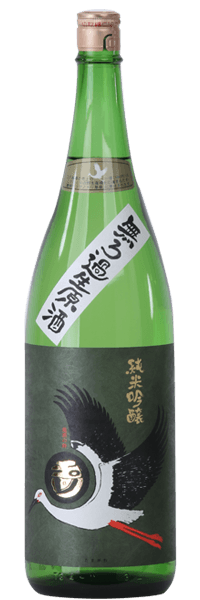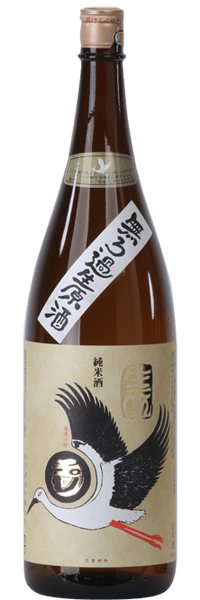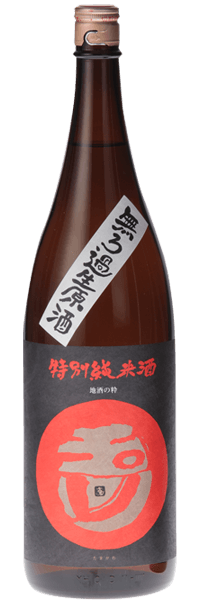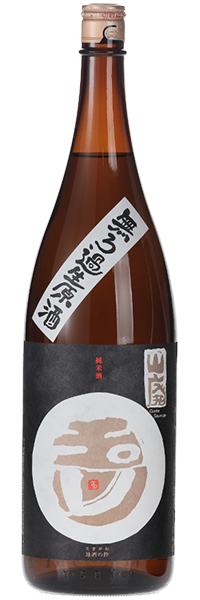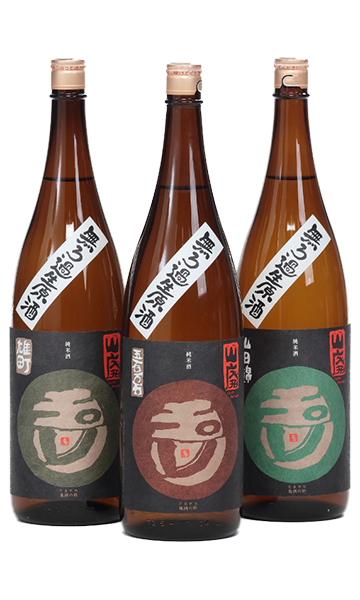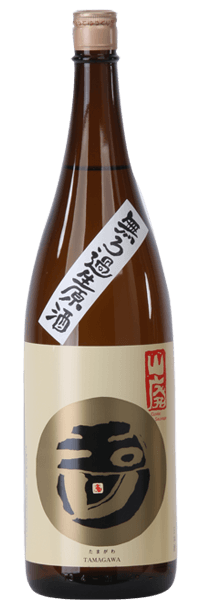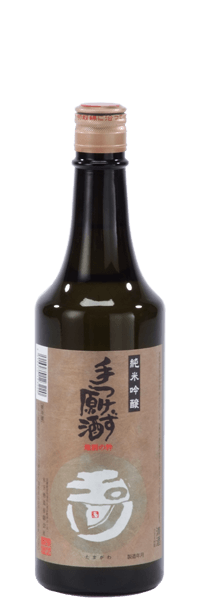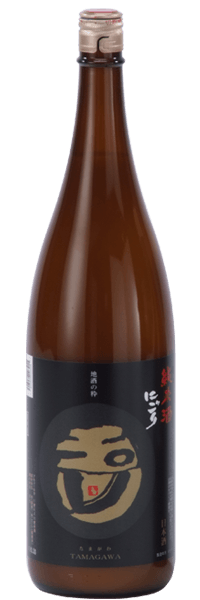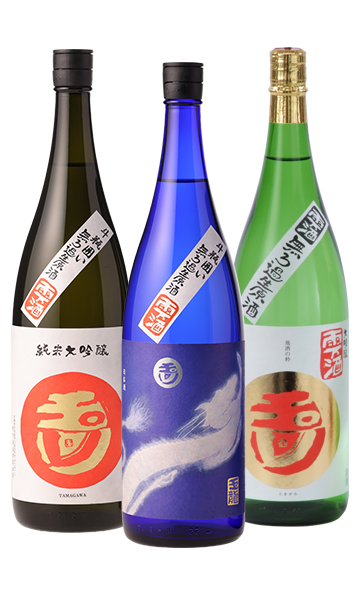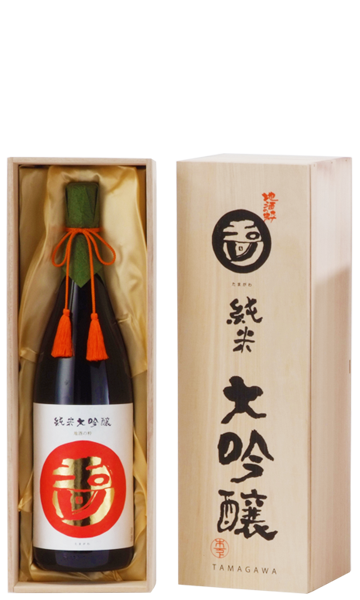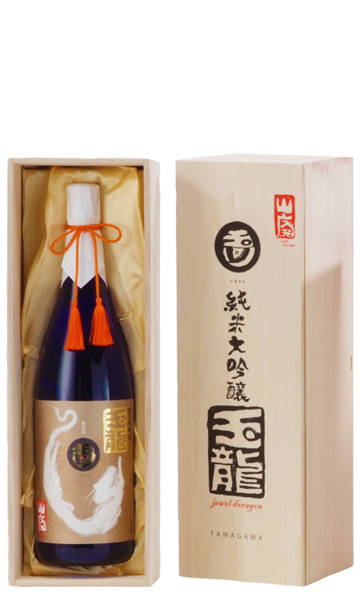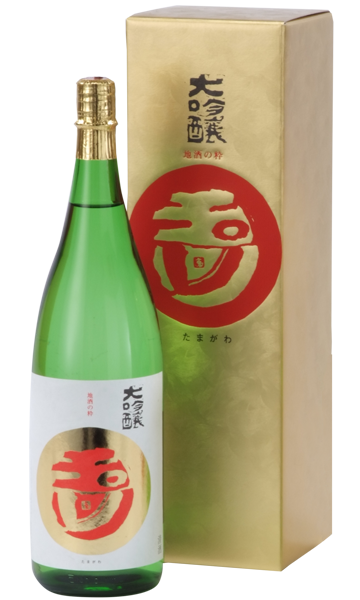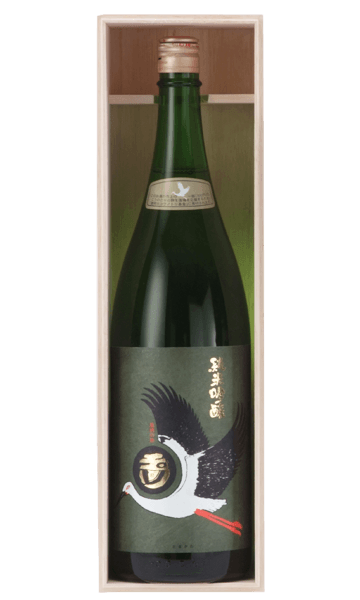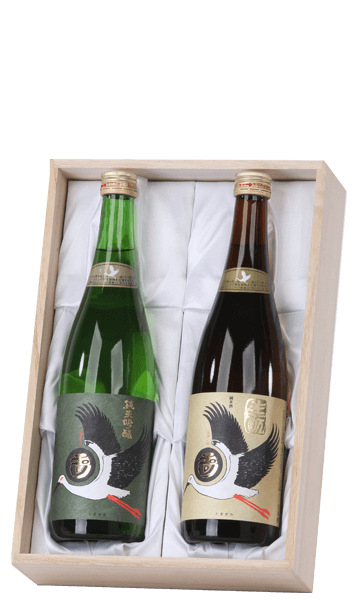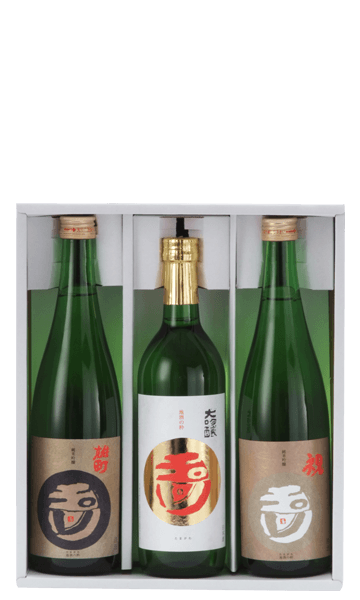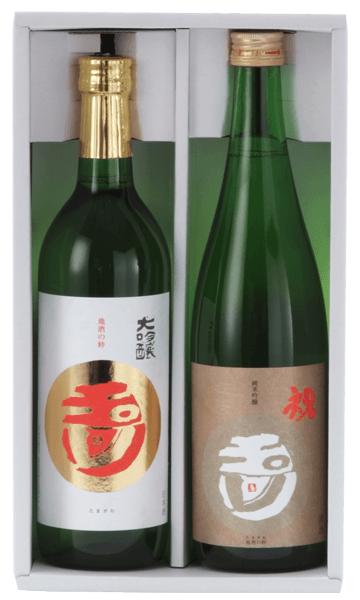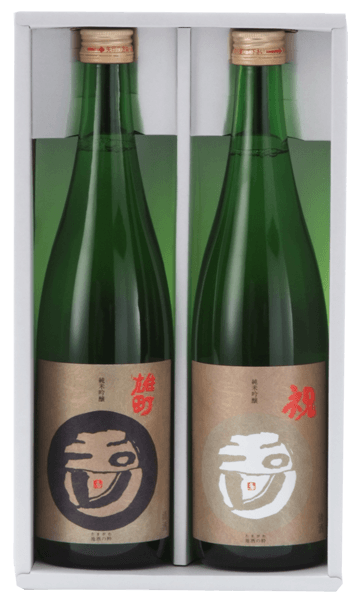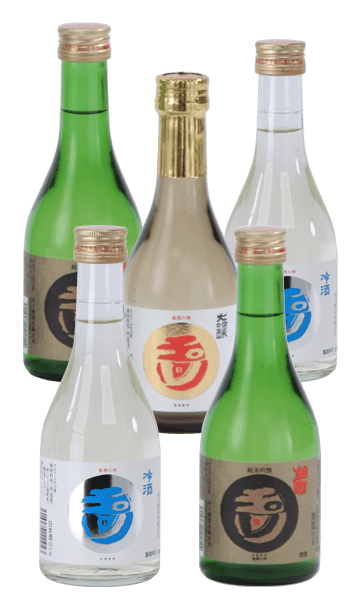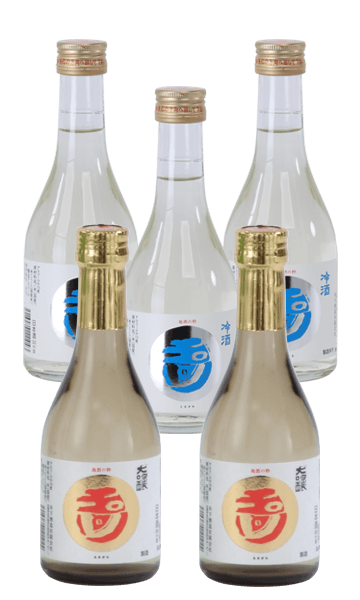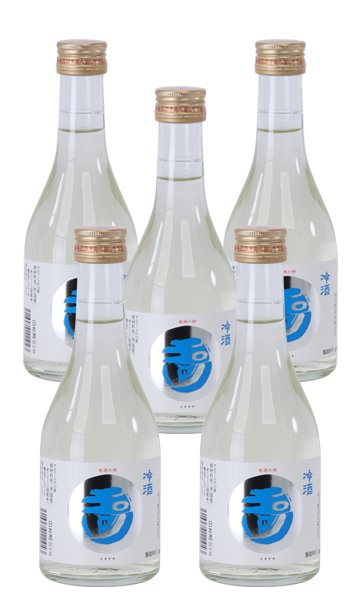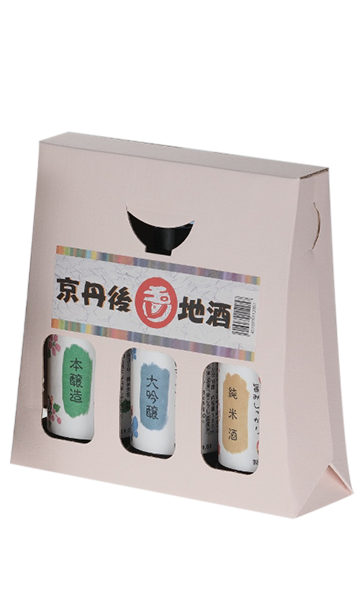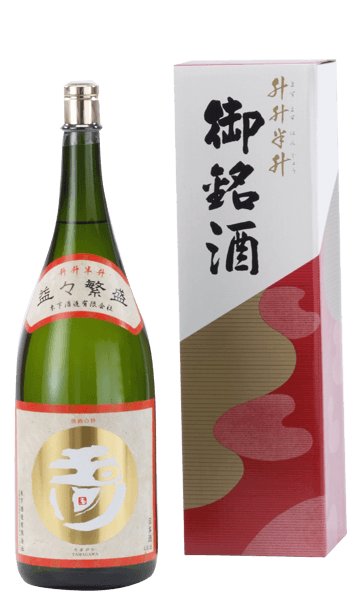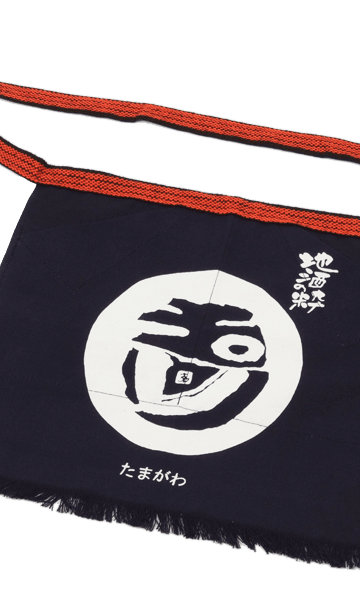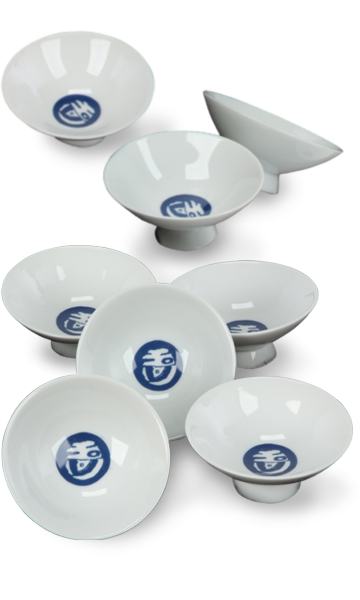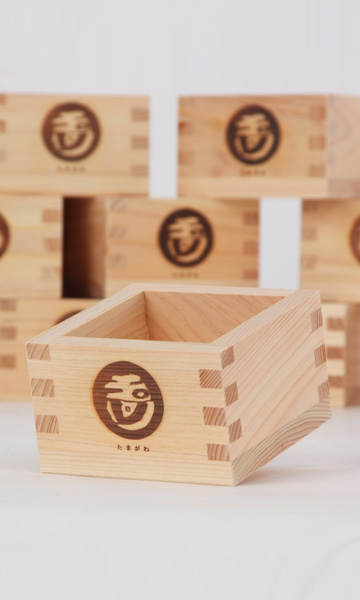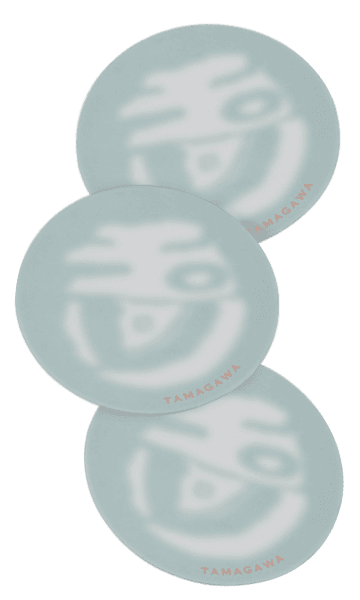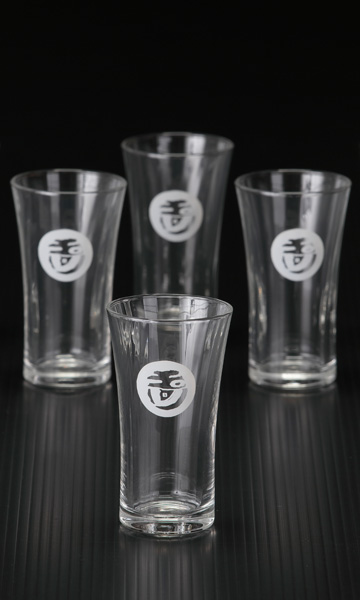“Time Machine” is a unique sake made according to a recipe recorded in 1712. We faithfully reproduce the methods of the time, using rice polished only to 88% of its original size, considered to be the limit of the technically possible of the era. (The number 88 is also highly auspicious in Japanese culture.) Cultivation of kōji takes 72 hours, compared to the modern standard of 48. We make the yeast starter without using pure yeast cultures, relying only on the microorganisms living on the earth walls and wooden beams of our original brewery buildings to drive fermentation. This process alone takes around a month. Mashing takes place with a very low ratio of water, making for a tremendously stiff mash which is hard to handle and challenging to press at the end of fermentation. Fermentation itself takes close to two months, and the final yields are only around half of those of modern methodology. This is sake as it was in the days before mass-production.
Conventional sake as seen in a glass immediately after pressing has only the palest of yellow/green colour. Over time, this colour changes along with the taste and aromas. Though darker yellow to amber, over years the colour darkens to brown, and, after several decades, to coffee and soy sauce darkness. Time Machine, though, has a rich gold colour, equivalent to that of ordinary sake aged for five to ten years, on the very day it is pressed. Colour as dark as that of the 2010 vintage would require at least half a century of ageing for a conventional brew. When new, the aromatics of Time Machine are reminiscent of honey; Japanese noses are inevitably reminded of the mitarashi dangō sweets made with a glaze of sweetened soy sauce. As the sake changes from gold to darker tawny colour, the aromatics and flavour shift to smokey caramel, then later to chocolate, soy sauce and dried fruits. To Japanese palates, the most familiar parallel is with narazuke pickles, made by pickling vegetables over a period of years in the lees left over after sake is pressed. To those from the UK (like our Master Brewer, Philip Harper), Marmite and Christmas pudding will be closer to olfactory home.
- Class
- Junmaishu
- Domestic availability
- On sale from July 1st: while stocks last
- Ingredients
- Rice, rice koji
- Rice
- Kitanishiki (Hyogo Prefecture)
- Rice polishing ratio
- 88%
- Alcohol
- 11~11.9%
Serving recommendation
Sizes and prices
| Sizes | Prices |
|---|---|
| 180ml (three bottles) gift box | 10000(10000yen) |

